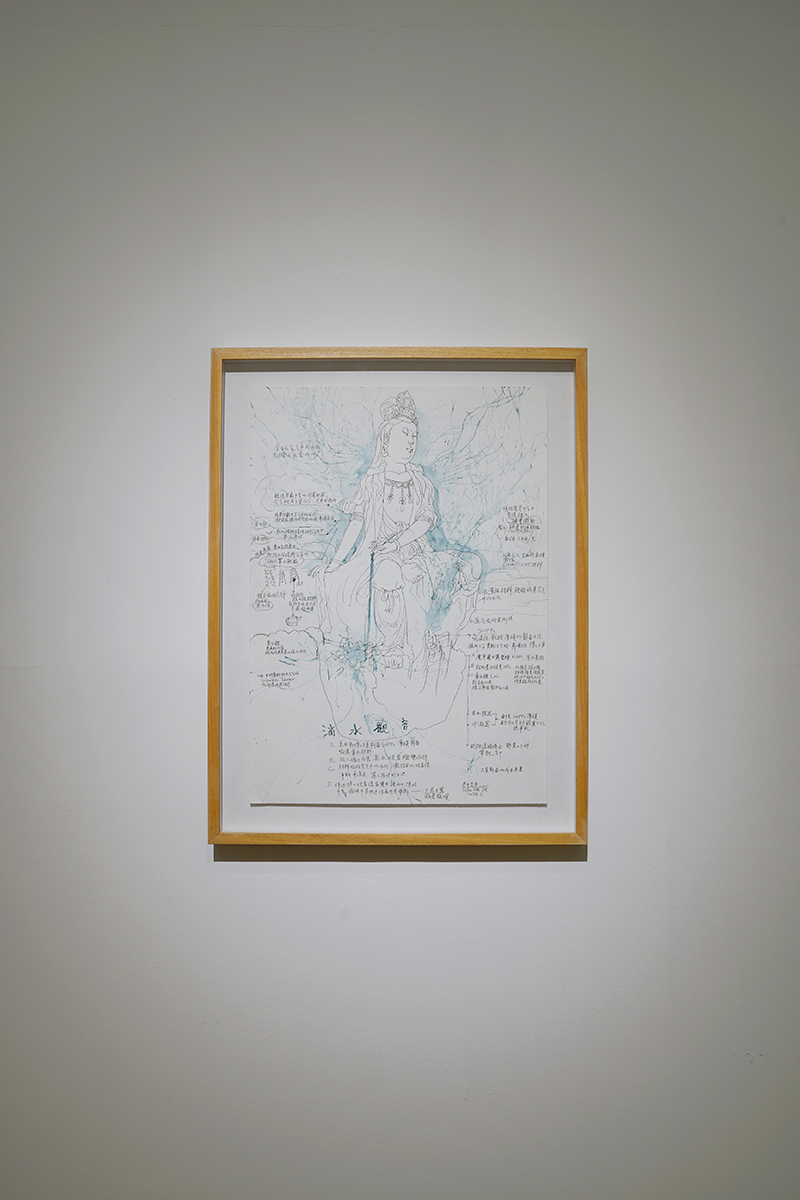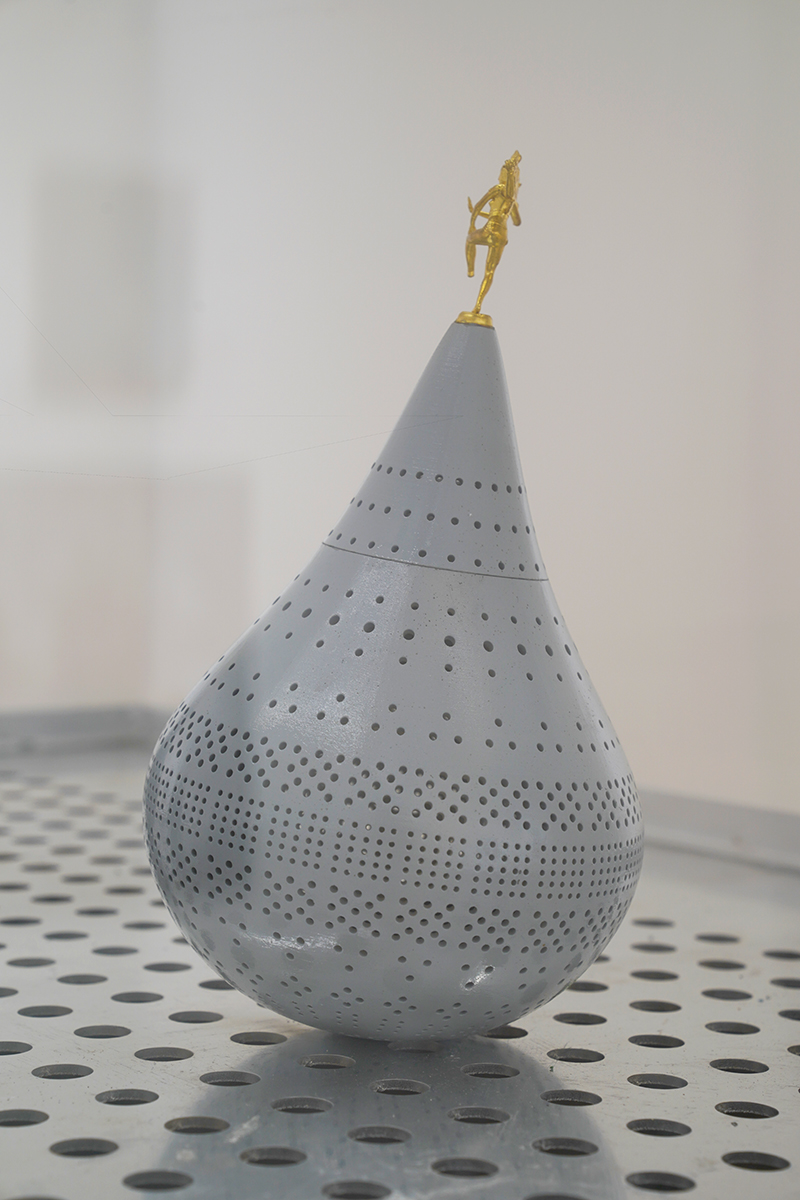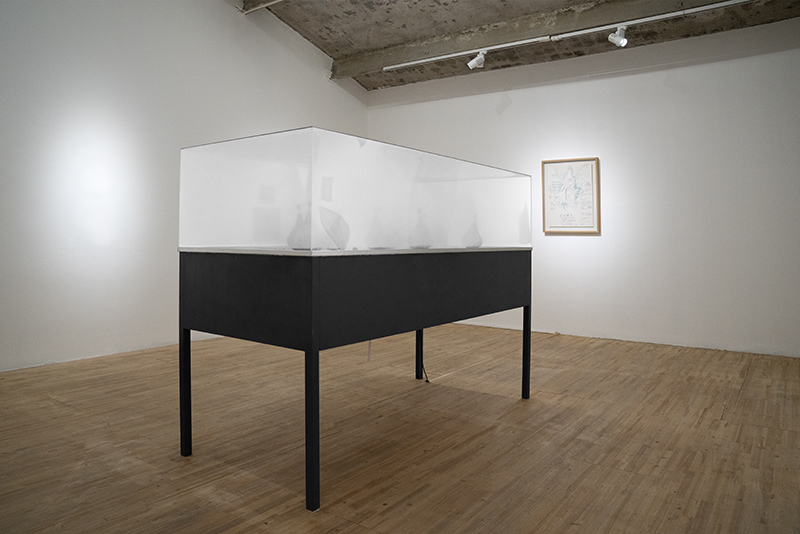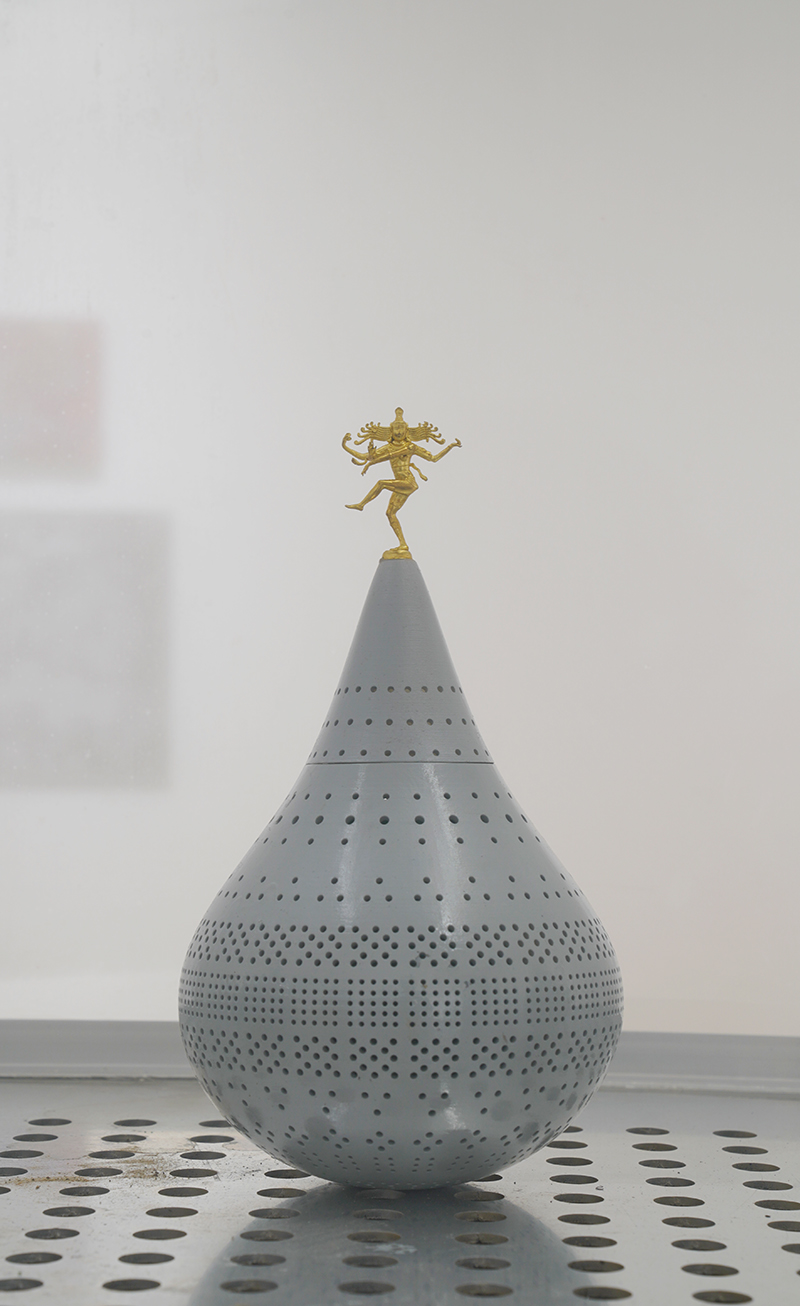 |
The Dance of Shiva: Roly-poly Toy Wet and Dry |
||||||||||||||||||||||||||||||||||||||||||||||||||
|
Motivation: My original idea was to create a roly-poly toy sculpture using small-sized metal and moisture-absorbing materials. When it's humid, the moisture-absorbing material at the bottom absorbs water and becomes heavier, allowing the sculpture to stand upright. When it's dry, the material would dehydrate, making the sculpture top-heavy and causing it to tip over. I planned to construct a sealed glass cabinet where a dehumidifier and humidifier would alternately function, causing the sculptures to repeatedly stand and topple. The crucial aspect is the weight ratio between the copper statue and the 3 D-printed teardrop-shaped swinging component beneath it. The copper statue needs to be made in a way that ensures the teardrop section, with the moisture-absorbing material, is lighter than the component on top. In this configuration, the entire roly-poly toy sculpture would be top-heavy. When moisture is not absorbed, it would rest on the ground. As the absorbing process begins, it gradually becomes heavier and eventually stands up. The choice of moisture-absorbing material needs experimentation. The possible solution lies in polymer resins, hydrogels, floral foam, industrial activated carbon, etc. Types and quantities of the materials will affect the weight balance. Research: Materials such as superabsorbent polymers used in diapers are designed to come into direct contact with water. However, for my project, the aim is to absorb moisture from the air, so I need to identify hygroscopic materials. I have come across research conducted in the United States and Singapore on gels that can absorb water from the atmosphere. MIT has developed a superabsorbent hydrogel by incorporating lithium chloride into the gel. Additionally, researchers at the University of Texas at Austin have designed a material consisting of temperature-responsive cellulose, which exhibits hydrophobic properties when heated, enabling immediate release of the collected water. This material enables rapid transitions between water absorption and dehydration, and hence becomes the most promising option. The production involves combining konjac glucomannan, hydroxypropyl cellulose, and lithium chloride (LiCl) to form a thin film. The tremendous potential of these superabsorbent hydrogels could be the key to achieving more sustainable water collection and energy-saving practices. From the arid deserts to the humid cities, water vapor exists ubiquitously in the air. It is estimated that around 3 , 100 cubic miles ( 12 , 900 cubic kilometers) of water, in the form of moisture, float in the air around us, surpassing the volume of North America's largest lake, Lake Superior ( 11 , 600 cubic kilometers), or approximately equivalent to five Lake Victorias (Lake Victoria being Africa's largest lake, with a volume of 2 , 700 cubic kilometers). In 2019 , a team from the National University of Singapore developed a novel water-absorbing hydrogel capable of effectively capturing moisture from the air above the oceans and subsequently releasing it as freshwater. If the emerging technology of “air-to-water” devices can overcome challenges lying ahead, it would boast substantiate potential in solving the global freshwater crisis. Progress and Experimentation: We have reached out to Dr. Guo Youhong, a researcher currently affiliated with MIT. She is pursuing her postdoctoral studies after previously conducting research under the guidance of Professor Guihua Yu in the Department of Materials Science and Engineering at the University of Texas at Austin . Her research focuses on atmospheric water harvesting technology, utilizing a combination of konjac glucomannan, hydroxypropyl cellulose, and lithium chloride (LiCl) to design lightweight, rapid water-absorbing thin films. Relevant paper titled “Scalable super hygroscopic polymer films for sustainable moisture harvesting in arid environments” has been published in Nature Communications. To address the specific requirements for the equipment to fabricate fast water-absorbing thin films, support has been provided by the research team led by Professor Liu Jing at the Institute of Chemistry , Chinese Academy of Sciences. However, the current challenge lies in the laboratory's limited manufacturing capacity, which leads to incompetence in large-scale production and high cost. Procedure: 1 . Fabricate in the laboratory lightweight thin films capable of rapid water absorption and desorption. 2 . Employ 3 D printing technology to create the body of the Roly-poly Toy. Produce the “Dance of Shiva” sculpture. 3 . In the construction of the enclosed casing, extensive research is required on the integration of a drying machine, humidifier, switching mechanism, and sensing devices. 4 . In high humidity, the water-absorbing material in the lower section will become saturated, causing the sculpture to stand upright. Conversely, when the air turns dry, the material will undergo desorption, resulting in an imbalance where the sculpture's head becomes heavier than its feet, leading to a tipping motion. This alternating cycle of standing and tipping will be facilitated by the activation of the drying machine and humidifier. The sculpture will continuously switch between the two states. Further improvement: Without human intervention in the transition between dry and humid environments, the sculpture could serve as an air humidity gauge. After referencing relevant technologies and achieving the collection of fresh water from the air, which can be dispensed through a faucet, it would become a practical device. That would truly be the “Dance of Shiva”! Once the experiment matures and manufacturing capabilities improve, we envision constructing the entire figurine in the form of a “Dripping Water Guanyin” using exquisite Dehua porcelain. The waves and clouds at Guanyin's feet would be embedded with moisture-absorbing materials to collect water from the air. Continuous water flow would emanate from her kalasa (purifying vessel). We can then display this Guanyin statue in water-scarce regions such as northern Shaanxi , Xinjiang, the Middle East, and deserts in Africa , both as an immediate installation and a water dispenser. The compassionate spirit of Guanyin, the Bodhisattva who relieves suffering and aids those in need, would be utterly showcased.
|



